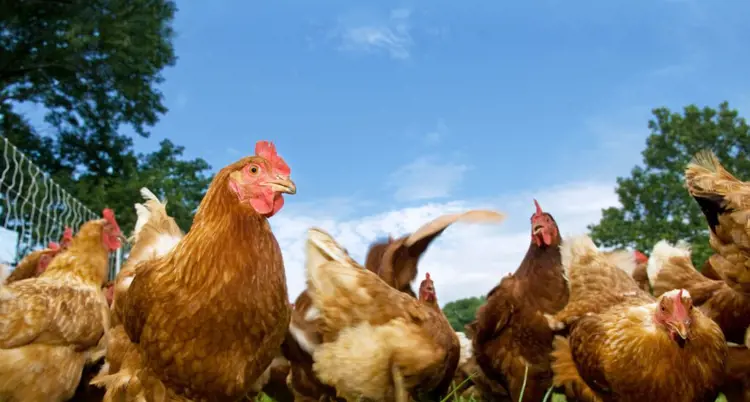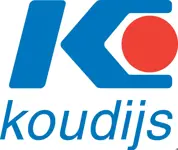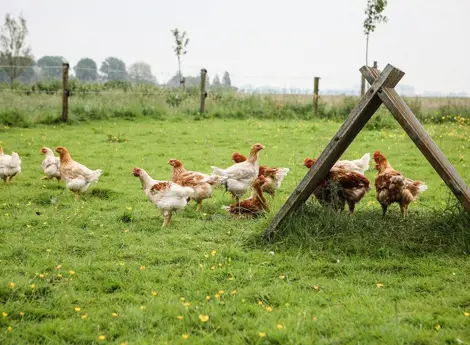Preventing fatty liver syndrome by ensuring a healthy liver in laying hens
Fatty liver haemorrhagic syndrome (FLHS) is a common metabolic disorder in laying hens, where excessive fat accumulates in the liver, leading to liver damage, haemorrhages and even death. This condition can negatively impact egg production, overall bird health and farm profitability. Proper liver health is essential to preventing FLHS and promoting the longevity and productivity of the flock. This article explores key management and nutritional strategies to maintain liver health and reduce the risk of FLHS.

Understanding fatty liver haemorrhagic syndrome (FLHS)
FLHS is primarily caused by an imbalance in the metabolism of fats and carbohydrates. The main cause is too high energy intake that exceeds transport of energy out of the liver. The surplus energy is synthesized by liver lipogenesis into triglycerides which are stored in the liver. Excessive storage of triglycerides leads to liver fattening.
Lipoproteins (VLDL) are used to transport triglycerides from the liver to the oviduct and other organs. These VLDL-molecules (Very Low Density Lipoproteins) are synthesised in the liver. Scientific literature hypothesises that production rate of liver apoprotein (an essential component of VLDL) is rate limiting factor of lipoprotein synthesis.
When the liver produces more triglycerides from dietary starch and fat, than what it can evacuate out of the liver to the adipose tissue and the ovary, triglycerides will accumulate.
Over time, this accumulation results in the enlargement of the liver, friable and, in severe cases, haemorrhages. Factors such as high-energy diets combined with low protein levels, heat stress and inadequate farm management practices (like poor ventilation) contribute to the development of FLHS.
Symptoms of FLHS include reduced egg production, pale combs, decreased feed intake, and increased mortality. Upon post-mortem examination, affected hens exhibit swollen, yellowish, and friable livers, often with haemorrhages.
Nutrition, feed structure and management
Proper nutrition plays a vital role in preventing FLHS. A balanced diet that provides the right amount of energy, protein, and essential vitamins and minerals is critical. Besides a well-balanced feed, particle size distribution of the feed is just as important. Layers are selective eaters preferring to eat large particles. The eating behaviour of flocks also has an impact. Their feeding behaviour is largely determined by a pecking order, where the same dominant birds will always be first to eat while the other birds have to wait. The first eaters select the large particles, which in layer mash feed usually consist of starch-rich raw materials, like corn and wheat. As a result, these birds will have an oversupply of energy intake, resulting in heavy layers with a lot of abdominal fat. This is a sign of a higher risk for FLHS. At the same time, the remainder of the flock will eat more proteins and less starch. This will not directly lead to FLHS but does have a higher risk for intestinal health issues.
An energy overload from starch means the liver has to synthesise more carbohydrates into triglycerides. It therefore needs more protein for the production of lipoprotein to transport the triglycerides to the adipose tissue. The limiting lipoprotein synthesis results in a fatty liver.
There are different factors that have an effect on FLHS risks. A well-balanced feed with the right energy-to-protein ratio (digestible amino acids), a homogenous particle size distribution of the feed is essential. Feed management and farm management (like good ventilation and prevention against heat stress and other health risks) are important factors, showing this a multifactorial syndrome
Hens can usually recover well from FLHS within three to four weeks – assuming their livers are not severely damaged or ruptured.
How to properly support hens
First, prevention is best. Monitoring bird weight and feed intake helps to analyse the flock so that prompt adjustments can be made in feed formulation, particle size and management to prevent excessive fat accumulation. . Farmers should conduct regular checks in his flocks for symptoms that may indicate liver issues. Post-mortem examinations will provide valuable insights into liver health and the effectiveness of the current diet and management practices.
Second, farmers need to find the likely cause of the problem, e,g, nutrition, particle size, feed intake, etc and take appropriate action. Young layers should be sufficiently developed at the onset of lay. This indicates that the feed consumption was high enough. For older layers feed intake decreases slightly and therefore carefully managed.
Nutritional strategies, such as using choline, betaine and methionine can improve liver function and stimulate fat metabolism in the liver. Where choline, betaine and methionine are involved in protein synthesis, lipogenesis and transport of triglycerides. Also several B-vitamins and anti-oxidants (i.e. vitamin E and selenium) are involved in these processes.
Complete nutritional support
In conclusion, FLHS is caused by various factors, including nutritional and farm management. To solve (severe) fatty liver, from a nutritional point of view a common practise is to just add extra choline chloride to feed, but this is not enough. For these FLHS cases, Koudijs has developed Hepatix, which contains a specific combination of more than 10 essential vitamins and minerals (including the above mentioned vitamins B, vitamins E, organic se, betaine, choline, etc) that help improve liver health of layers. Adding Hepatix to layer feeds supports liver recovery in multiple ways, making Hepatix an interesting product to use in compound feed production. Hepatix, together with a well-balanced feed, homogenous particle size and prevention of overfeeding or excessive energy through management strategies, flocks can recover from FLHS within several weeks.

Read the latest version of the Koudijs newsletter!
Read hereAbout the author

Marnix van de Wetering
Specialist Poultry
Do you have any questions or would you like more information? Get in touch with Marnix.




